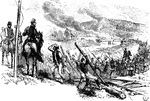The 1861-1865 Civil War Other Events ClipArt gallery includes 137 illustrations of other important events that occurred during the American Civil War.

Kirby Smith
"Voluntary dispersion of Kirby Smith's Confederate army at Shreveport, La., May 23rd, 1865. There was…
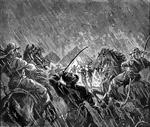
Stuart's Raid
"General J. E. B. Stuart's raid upon Pope's headquarters, August 22, 1862, when Pope's despatch book…
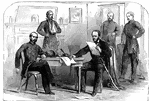
Surrender of General Johnson to General Sherman
Genereal Johnson surrendering to Union General Sherman.
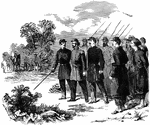
Major Taylor
"Escorting Major Taylor, of New Orleans, the bearer of a flag of truce, blindfolded, to the Confederate…

Terms of Surrender
"General Lee singing the Terms of Surrender at Appomattox court-house."—E. Benjamin Andrews 1895
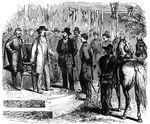
Siege of Vicksburg
"The siege of Vicksburg. General Grant meeting the Confederate General Pemberton at the Stone House,…

Fort Wagner
"Siege of Charleston, S. C.- Federal sharpshooters approaching Fort Wagner before the avacuation."—…

Fort Walker
"Landing of United States troops at Fort Walker, after the bombardment, November 7th, 1861. In order…

White House Landing
"White House Landing, Pamunkey River, Va., the Grand Depot of the Commissariat and Ordinance Department…

Burning of the White House
"Burning of the White House- the Federal troops, by command of General McClellan, abandoning their position…
Burning of the White House
"Burning of the White House- the Federal troops, by command of General McClellan, abandoning their position…

Billy Wilson Zouaves
"The ('Billy') Wilson Zouaves, at Tammany Hall, taking the oath of fidelity to the flag, April 24th,…

Ellsworth's Zouaves
"The departure of Colonel Ellsworth's Zouaves from New york, escorted by the fire department- the regiment…


